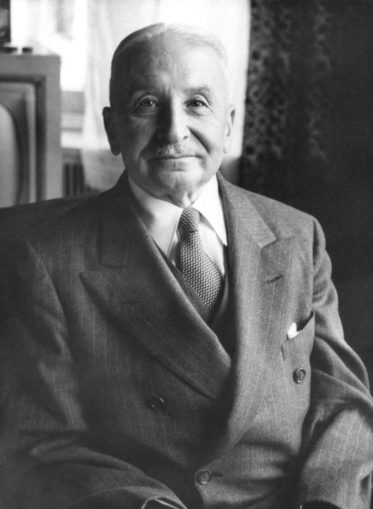
Ludwig von Mises Institute, CC BY-SA 3.0, via Wikimedia Commons
The above title would make one believe that what follows will be very long and very difficult to learn, but it is not. In this short article I will explain the relationship among four metrics: (1) the Money Supply, (2) the Price Level, (3) the Interest Rate, and (4) the Structure of Production. The key is to understand the three uses of money and their effect on these four metrics–hold, spend, and invest, as explained very well in Hans Hermann Hoppe’s The Economics and Ethics of Private Property, chapter seven.
Let’s start with the three uses of money—hold, spend, and invest. When explaining this concept to students, I like to draw a horizontal line on the blackboard and divide it into three sections. You can do the same with a piece of paper. Here’s what happens when society decides to change its relationship among these three uses, ALL OTHER THINGS BEING EQUAL (especially assuming no increase or decrease in the money supply):
- An increase in the demand to hold money (money in your wallet, cookie jar, or checking account) will cause the price level to fall. The interest rate and the structure of production will be unchanged.
- An increase in the propensity to spend will change the structure of production; i.e., moving production to bring more consumer goods to market: thereby, shortening the production process and reducing the availability of goods in the future. The interest rate will rise, but the price level will remain unchanged.
- An increase in investment (savings) will change the structure of production in the opposite way: i.e., reducing the production of consumer goods and increasing the availability of goods in the future. The interest rate will fall.
A general increase in the money supply, without a change among the relationship among the three uses of money, will cause the price level to rise, because the amount of money going to spending and investing has increased. However, if all of the increase in the money supply is held, the price level and the structure of production will remain unchanged. Here’s a quick thought experiment. Assume that Fed Chairman Jay Powell hands you a suitcase with one million dollars of newly printed Federal Reserve Notes. The money supply has risen, but nothing will happen to the price level or the structure of production until you actually spend the money. If you put the suitcase under your bed and never spend it, nothing ever will happen. But that is unlikely. Eventually you will spend the money on consumer goods and probably save some part of it. Then the price level will rise. It is very likely that the structure of production and the interest rate will change, too, unless your propensity to save is exactly the same as the overall market prior to Chairman Powell’s generous contribution to you.
From a monetary standpoint, one can understand that increasing the money supply will NOT cause a general increase in the availability of consumer and producer goods. Therefore, government’s attempts to stimulate the economy through printing money out of thin air cannot work. Any short term spending spree will come at the expense of the availability of future goods. It is no different than if you or I decided to go on a spending spree by running down our lifetime savings and maybe borrowing even more. It might appear to those outside our families that we have suddenly become wealthier. But eventually we will run out of savings and our creditors will turn off the lending spigot. Then it will be clear to all that our future prosperity has been damaged perhaps beyond our ability to repair.
This is the situation that America and the rest of the Keynesian dominated world have created for many decades. America ran out of real savings a long time ago and has been living on borrowed and printed money. But our creditors are coming to their senses and are calling in our loans. Our response has been to print more money in compensation. But we can see that increasing the money supply merely causes prices to increase. And this is just the detrimental impact from the monetary side. Producers, especially those that require years of investment before their products come to market, such as mineral producers, will not be able to recoup their investment in dollars of the same purchasing power as when invested. Some may go bankrupt, but all will be harmed to some extent.
So, some may ask, if more money does not produce more wealth, what does? The answer is hard work, innovation, the expansion of the specialization of labor through free trade, few regulations on industry, low taxes, and limited government that makes all these elements possible. More goods on the market will cause a gradually falling price level, benefiting all. The key is to restore sound money that cannot be increased at the click of a computer button at the central bank. In a word—GOLD.
© Patrick Barron 2024 Website



